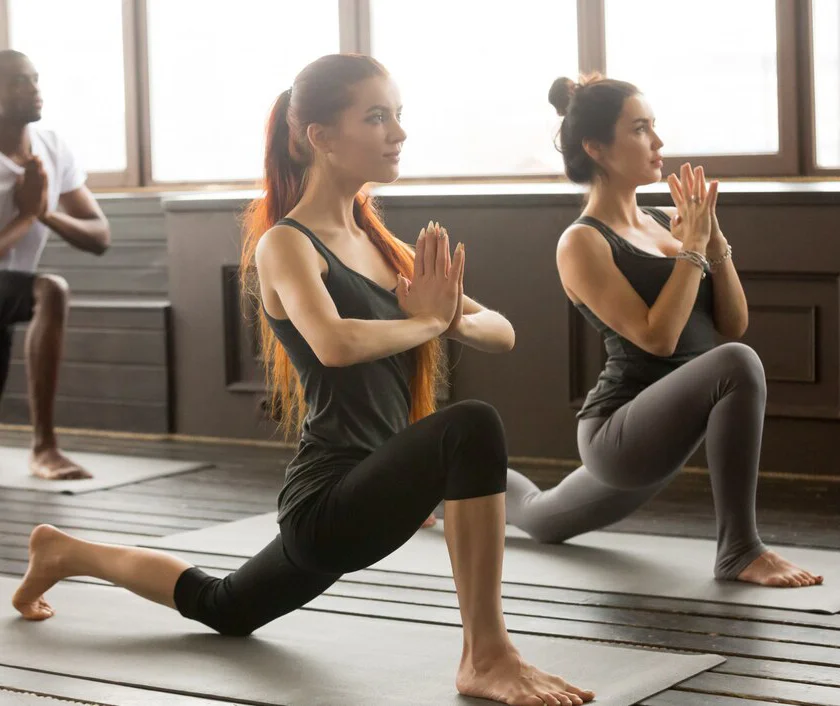What is Pranayama?
What is Pranayama?
This article is part of a series exploring ashtanga yoga, or the eight-limbed path. You can check out the previous article on the third limb, Asana, as well as the articles exploring the yamas (Ahimsa, Satya, Asteya, Brahmacharya, and Aparigraha) and niyamas (Saucha, Santosha, Tapas, Svadhyaya, and Ishvara Pranidhana) for more background.
Pranayama is the fourth limb of the eight-limbed path as defined by Patanjali, who compiled the Yoga Sutras. Pranayama is an essential part of Asana (yoga posture) practice but is also a separate practice of its own. The Sanskrit word Pranayama has two parts: Prana, which translates as “energy” or “life-force,” and yama, which translates as “regulation” or “control.” Together, Pranayama translates as “regulation of energy.”
What does that have to do with the breath?
Pranayama is the practice of conscious control and manipulation of the breath. Control of the breath helps to control the flow of energy, or Prana, within your body. Breathing in a certain way can bring you peace, relaxation, and clarity; breathing in another way can bring heat, focus, and energy.
Daily stressors and habits create blocks for deep breathing – notice how hunching over a keyboard or leaning deeply into one hip restricts open movement of the breath. Practicing Asana to open up the tight places in your torso and then sitting in meditation and focusing on the breath can have a significant effect on your mind and body by regulating your fight-flight-freeze nervous system response, which tends to be over-stimulated in most of us.
We breathe in different ways depending on how we are feeling, whether that is angry, excited, nervous, upset, or calm. Fortunately, in the same way that emotion alters the breath, we can affect our mood by controlling the movement of the breath.
Intentionally slowing down and breathing deeply can help to bring calmness and equilibrium to the mind.
Get started with Pranayama
Here are a couple Pranayama techniques to get you started:
- Alternate Nostril Breathing, or Nadi Shodhana
Take a comfortable seat and start with 2-3 slow, deep breaths, then use your right thumb to block your right nostril. Breathe in for a count of four, then plug your left nostril with your right ring finger and release your right nostril to breathe out for a count of four. Stay as is to breathe in for a count of four on the right and then plug the right nostril again to breathe out for a count of four on the left. Continue switching back and forth at the top of each inhale for at least 10 breaths, then release both nostrils and breathe slowly and deeply for 4-5 more breaths.
- Breath of Fire, or Kapalabhati
Breath of Fire is a strong, heat-building breath and should not be practiced if you have high blood pressure or are pregnant. If you are unsure of this practice, try it under the guidance of an experienced teacher.
To practice breath of fire, you will be force-exhaling rapidly through the nose or mouth (the mouth is easier to start with) by quickly pulling in your abdominal muscles. It can help to keep one hand on your belly to focus your attention on moving those muscles. It is important not to move the shoulders here; the primary action is in the abdomen. To start, sit comfortably and take 2-3 slow breaths, then inhale deeply. Pull in the abdominal muscles rapidly to exhale between 10 and 20 times, then return to breathing deeply through the nose.
- Three-part breath
Three-part breath helps to focus your attention on different levels of breath within your torso. The three areas you will focus on are breathing into are the chest, ribs, and belly. For this exercise you can sit or lie down; lying down can be helpful if you are new to Pranayama practices. Start with taking 2-3 long, deep breaths to relax your body, then take 2 shallow breaths just into your chest, keeping the movement of your rib cage and belly restricted. Next, take two breaths into the rib cage, expanding the chest, keeping the belly restricted. Last, extend your breath all the way into the belly, expanding the chest, then rib cage, then belly. Continue in this pattern for 4-5 repetitions, then continue to take full chest-rib cage-belly breaths for 10 more rounds.
Pranayama in your yoga practice
You can apply Pranayama in a couple of ways within an Asana practice. The first is to focus on the breath above all and keep your breathing steady and comfortable throughout your entire movement practice; this is a technique that you can use at all times no matter what other focuses or practices you do. The second way is to include specific Pranayama exercises at the beginning, middle, or end of your practice. Try including alternate-nostril breathing at the beginning and see how that affects your practice, or try Breath of Fire as a heating practice and notice its effects. Approach Pranayama as an experiment and an exploration of your body and your practice and use the techniques that work the best for you individually.
As always, bring your questions to your teachers. Happy breathing!


